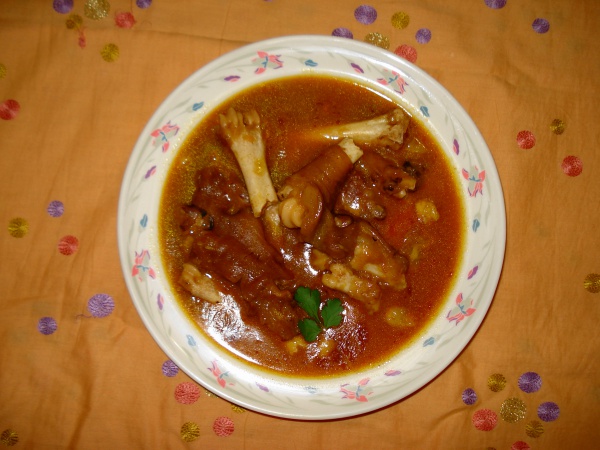Facts About Paya
Paya is a cherished traditional dish from the Indian Subcontinent, often reserved for festivals, gatherings, or honored guests. This hearty meal features trotters or hooves from beef, goat, buffalo, or sheep, slow-cooked with a rich array of spices. The word "paya" means 'legs' in Hindustani, and the dish traces its origins to South and Central Asian cuisines, where it was known as "pacha" in Central Asia. Over time, Muslim cooks in cities like Lahore, Hyderabad, and Lucknow adapted it to local tastes, making it a beloved dish in India, Pakistan, and Bangladesh today.
Recipes for paya can vary depending on the region but generally begin with a soup base made from sautéed onions, garlic, and a blend of curry spices. The meat and bones are then added and cooked until tender. Fresh ginger, coriander leaves, and lemon often serve as garnishes, adding a burst of flavor and freshness. Traditionally, paya is simmered gently for hours, sometimes overnight, to develop its rich flavors. While modern cooks might use a pressure cooker to save time, the traditional method involved slow-cooking over wood or coal, particularly overnight.
Paya is typically enjoyed as a hearty breakfast during the colder months, paired with naan bread. There are several variations, including "siri paya" which combines the head ("siri") and feet ("paya") of the animal, making it a special delicacy. Today, you can also find paya in South Asian restaurants around the world, bringing a taste of this traditional dish to a global audience.

 Nepal
Nepal